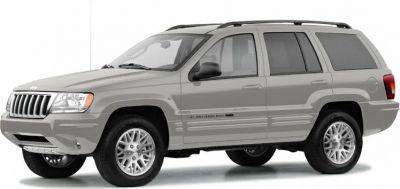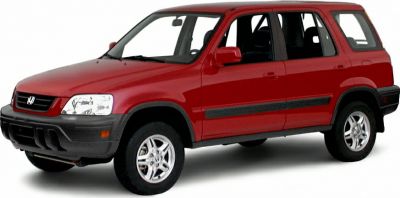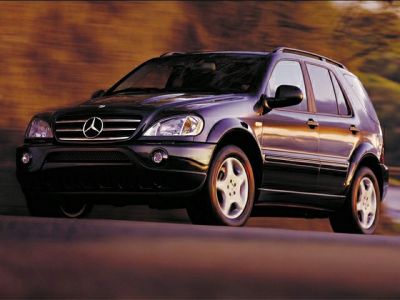 1996 Mitsubishi Challenger (W) Dimensions, Size & Specs
1996 Mitsubishi Challenger (W) Dimensions, Size & SpecsMeasurements of the 1996 Mitsubishi Challenger, engineered for optimal performance and comfort
| Dimensions | |
|---|---|
| Length: | 4530 mm178.3 in14.9 ft |
| Width: | 1775 mm69.9 in5.8 ft |
| Height: | 1730 mm68.1 in5.7 ft |
| Weight Specifications | |
| Curb Weight: | 1830-1950 kg4034-4299 lbs |
| Tire Specifications | |
| Tire Size: |
|
The Mitsubishi Challenger (W) is a robust mid-size SUV produced from 1996 to 2001, known for its solid build and practical dimensions ideal for both urban and off-road driving. Measuring 4530 mm (178.3 inches) in length, 1775 mm (69.9 inches) in width, and 1730 mm (68.1 inches) in height, the vehicle strikes a balance between spaciousness and maneuverability. It features a curb weight ranging between 1830 and 1950 kg (4037 to 4299 lbs), reflecting its durable chassis and capable drivetrain. The Challenger (W) rides on sturdy 265/70 R15 tires, providing strong grip and stability in various driving conditions. This generation of the Mitsubishi Challenger offers a commanding driving position typical for SUVs of this era, along with enough interior space to comfortably accommodate passengers and gear. Its size profile positions it well for families or adventurers needing a reliable 4x4 utility vehicle. Overall, the 1996-2001 Mitsubishi Challenger (W) combines sizeable presence with practical usability, making it a notable choice in the classic SUV segment.
Discover the standout features that make the 1996 Mitsubishi Challenger a leader in its class
Have a question? Please check our knowledgebase first.
The Mitsubishi Challenger (W) produced between 1996 and 2001 features an overall length of 4530 mm (178.3 inches), a width of 1775 mm (69.9 inches), and a height of 1730 mm (68.1 inches). These dimensions place the Challenger comfortably within the midsize SUV segment, providing a spacious interior for passengers and cargo. The vehicle's proportions contribute to a balanced design that offers good road presence without being excessively large, making it suitable for both city driving and off-road adventures.
The curb weight of the Mitsubishi Challenger (W) from 1996 to 2001 ranges between approximately 1830 kg to 1950 kg (4036 to 4299 lbs). This weight range stems from different trim levels and additional equipment options. The curb weight influences various factors such as acceleration, fuel efficiency, and handling. While the Challenger’s weight is relatively substantial, it ensures sturdy construction and stability, particularly useful for an SUV designed with off-road capabilities. This balance between weight and power delivery helps maintain decent agility and road grip despite the vehicle's robust size.
With a width of 1775 mm (69.9 inches), the Mitsubishi Challenger (W) strikes a middle ground that offers sufficient cabin space for passengers without making the vehicle too wide for typical urban and suburban driving conditions. This width allows the driver better maneuverability around tighter corners and in traffic compared to larger SUVs. In parking situations, while the Challenger may require slightly more space than smaller vehicles, it remains reasonably manageable in most standard parking lots or residential areas, although care is advised in narrow spots.
The Mitsubishi Challenger (W) stands at a height of 1730 mm (68.1 inches or approximately 5 feet 8 inches), which generally allows it to fit comfortably within a standard residential garage. Typical garage door heights are usually around 2130 mm (84 inches or 7 feet), giving sufficient clearance to accommodate the vehicle. However, owners should always measure their garage spaces carefully, including lighting fixtures or ceiling storage that might reduce clearance. Overall, the Challenger’s height isn’t excessive and should not pose challenges for most home garages.
Compared to its predecessor, the Mitsubishi Challenger (W) produced from 1996 to 2001 is generally similar in overall proportions, maintaining the midsize SUV stature. However, subtle changes in design and dimensions typically reflect improvements in interior space utilization and exterior styling. While exact figures for the predecessor may vary, this generation’s dimensions—4530 mm in length, 1775 mm width, and 1730 mm height—are aimed at enhancing passenger comfort and road handling without significantly increasing bulk. The enhanced width and moderate height improvements can contribute to a more stable ride and better cabin space.
The Mitsubishi Challenger (W) from 1996 to 2001 uses tire size 265/70 R15. This means the tires have a width of 265 mm (approximately 10.4 inches), an aspect ratio of 70% of the tire’s width for sidewall height, and fit 15-inch rims. These robust tires provide good ground clearance and traction, especially beneficial for an SUV designed with some off-road capability. The tire size strikes a balance between comfort and durability, offering a smooth ride on paved roads while being capable in rough terrain. The larger sidewall also helps absorb shocks better, improving overall ride quality.
When comparing the Mitsubishi Challenger (W) dimensions to similar midsize SUVs of the late 1990s and early 2000s like the Toyota 4Runner or Nissan Pathfinder, it holds up well within the category. Measuring 4530 mm in length (178.3 inches), 1775 mm in width (69.9 inches), and a height of 1730 mm (68.1 inches), it often falls just under or matches competitors in length and width but has competitive height for interior headroom and off-road clearance. Its curb weight also aligns with peers, offering a sturdy, capable vehicle without being overly heavy, balancing on-road comfort and off-road adaptability.
The Mitsubishi Challenger (W), with its midsize SUV dimensions, typically offers seating for five passengers comfortably. The 4530 mm length and 1775 mm width provide a spacious cabin that accommodates adult passengers with a reasonable amount of legroom and shoulder space in both front and rear seats. The height of 1730 mm contributes to good headroom for passengers. Additionally, the rear cargo area benefits from this size, allowing decent luggage or gear space that suits family use and outdoor activities. While exact interior measurements vary by trim and seating configurations, the Challenger is generally praised for its comfort and utility.
The Mitsubishi Challenger (W) is well-regarded for its off-road capabilities relative to its size and weight. With a curb weight between 1830 and 1950 kg (4036 to 4299 lbs), and its relatively compact yet robust dimensions (4530 mm length, 1775 mm width, and 1730 mm height), it maintains a low enough profile for stable handling on uneven terrain. The tire specification 265/70 R15 provides good grip and durability for rough conditions. Ground clearance and chassis design, common in SUVs of this era, further aid its off-road performance, making the Challenger capable of handling trails, mud, gravel, and moderate rock crawling while still functioning well in daily urban use.
The Mitsubishi Challenger (W) generation introduced from 1996 to 2001 brought several design and feature upgrades over earlier models. This generation appeared with a more modern and aerodynamic body style, which improved both aesthetics and fuel efficiency. The interior was revamped for increased comfort, incorporating better materials and updated instrumentation. On the technical side, enhancements in suspension and drivetrain options improved on-road comfort and off-road capability. Additionally, safety features and convenience options were progressively added or refined during this production period, reflecting advancements in automotive technology and consumer expectations of the late 1990s.
Discover similar sized cars.

| Production: | 2001-2003 |
|---|---|
| Model Year: | 2001 |
| Length: | 4510 mm177.6 in |
| Width: | 1765 mm69.5 in |
| Height: | 1675 mm65.9 in |

| Production: | 2003-2004 |
|---|---|
| Model Year: | 2004 |
| Length: | 4611 mm181.5 in |
| Width: | 2180 mm85.8 in |
| Height: | 1786-1805 mm70.3-71.1 in |

| Production: | 1995-2002 |
|---|---|
| Model Year: | 1995 |
| Length: | 4520 mm178.0 in |
| Width: | 1750 mm68.9 in |
| Height: | 1675-1710 mm65.9-67.3 in |

| Production: | 1997-2001 |
|---|---|
| Model Year: | 1998 |
| Length: | 4587-4635 mm180.6-182.5 in |
| Width: | 2190 mm86.2 in |
| Height: | 1802-1820 mm70.9-71.7 in |
